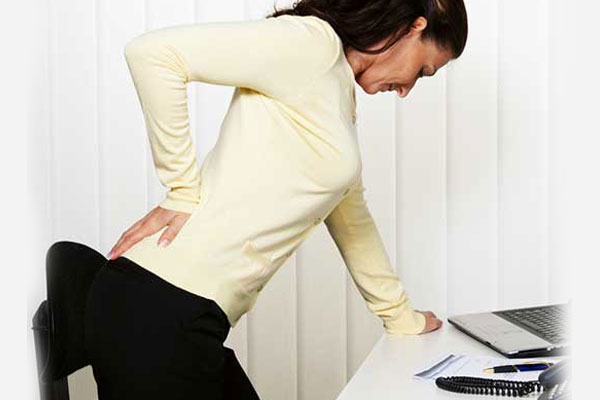 Hip bursitis, also known as Trochanteric bursitis is inflammation of a bursa or small sack of fluid between tendon and bone which prevents friction. The bursa can become inflamed causing pain in the hip.
Hip bursitis, also known as Trochanteric bursitis is inflammation of a bursa or small sack of fluid between tendon and bone which prevents friction. The bursa can become inflamed causing pain in the hip.
Symptoms of hip bursitis include pain on the outside of the hip which is worse during activities such as running, climbing stairs or getting out of a car. The pain will gradually get worse and the area on the outside of the hip is tender when pressing in. Pain may also radiate down the outside of the thigh.
Bursae, are small, jelly-like sacs that are located throughout the body, including around the shoulder, elbow, hip, knee, and heel. They contain a small amount of fluid, and are positioned between bones and soft tissues, acting as cushions to help reduce friction.
Bursitis is inflammation of the bursa. There are two major bursae in the hip that typically become irritated and inflamed. One bursa covers the bony point of the hip bone called the greater trochanter. Inflammation of this bursa is called trochanteric bursitis.
Another bursa — the iliopsoas bursa — is located on the inside (groin side) of the hip. When this bursa becomes inflamed, the condition is also sometimes referred to as hip bursitis, but the pain is located in the groin area. This condition is not as common as trochanteric bursitis, but is treated in a similar manner.
Symptoms
The main symptom of trochanteric bursitis is pain at the point of the hip. The pain usually extends to the outside of the thigh area. In the early stages, the pain is usually described as sharp and intense. Later, the pain may become more of an ache and spread across a larger area of the hip.
Typically, the pain is worse at night, when lying on the affected hip, and when getting up from a chair after being seated for a while. It also may get worse with prolonged walking, stair climbing, or squatting.
Treatment
Nonsurgical Treatment
The initial treatment for hip bursitis does not involve surgery. Many people with hip bursitis can experience relief with simple lifestyle changes, including:
- Activity modification : Avoid the activities that worsen symptoms.
- Non-steroidal anti-inflammatory drugs (NSAIDs). Ibuprofen, naproxen, piroxicam, celecoxib, and others, may relieve pain and control inflammation.Use NSAIDs cautiously and for limited periods. Talk with your doctor about the NSAIDs you use. NSAIDs may have adverse side effects if you have certain medical conditions or take certain medications.
- Assistive devices : Use of a walking cane or crutches for a week or more when needed.
- Physical therapy : Your doctor may prescribe exercises to increase hip strength and flexibility. You may do these exercises on your own, or a physical therapist may teach you how to stretch your hip muscles and use other treatments such as rolling therapy (massage), ice, heat, or ultrasound.
- Steroid injection : Injection of a corticosteroid along with a local anesthetic may also be helpful in relieving symptoms of hip bursitis. This is a simple and effective treatment that can be done in the doctor's office. It involves a single injection into the bursa. The injection may provide temporary (months) or permanent relief. If pain and inflammation return, another injection or two, given a few months apart, may be needed. It is important to limit the number of injections, as prolonged corticosteroid injections may damage the surrounding tissues.
Surgical Treatment
Surgery is rarely needed for hip bursitis. If the bursa remains inflamed and painful after all nonsurgical treatments have been tried, your doctor may recommend surgical removal of the bursa. Removal of the bursa does not hurt the hip, and the hip can function normally without it.
A newer technique that is gaining popularity is arthroscopic removal of the bursa. In this technique, the bursa is removed through a small (1/4-inch) incision over the hip. A small camera, or arthroscope, is placed in a second incision so the doctor can guide miniature surgical instruments and cut out the bursa. This surgery is less invasive, and recovery is quicker and less painful.
Both types of surgeries are done on an outpatient (same-day) basis, so an overnight stay in the hospital is not usually necessary. Early studies show arthroscopic removal of the bursa to be quite effective, but this is still being studied.

 Hip bursitis, also known as Trochanteric bursitis is inflammation of a bursa or small sack of fluid between tendon and bone which prevents friction. The bursa can become inflamed causing pain in the hip.
Hip bursitis, also known as Trochanteric bursitis is inflammation of a bursa or small sack of fluid between tendon and bone which prevents friction. The bursa can become inflamed causing pain in the hip.